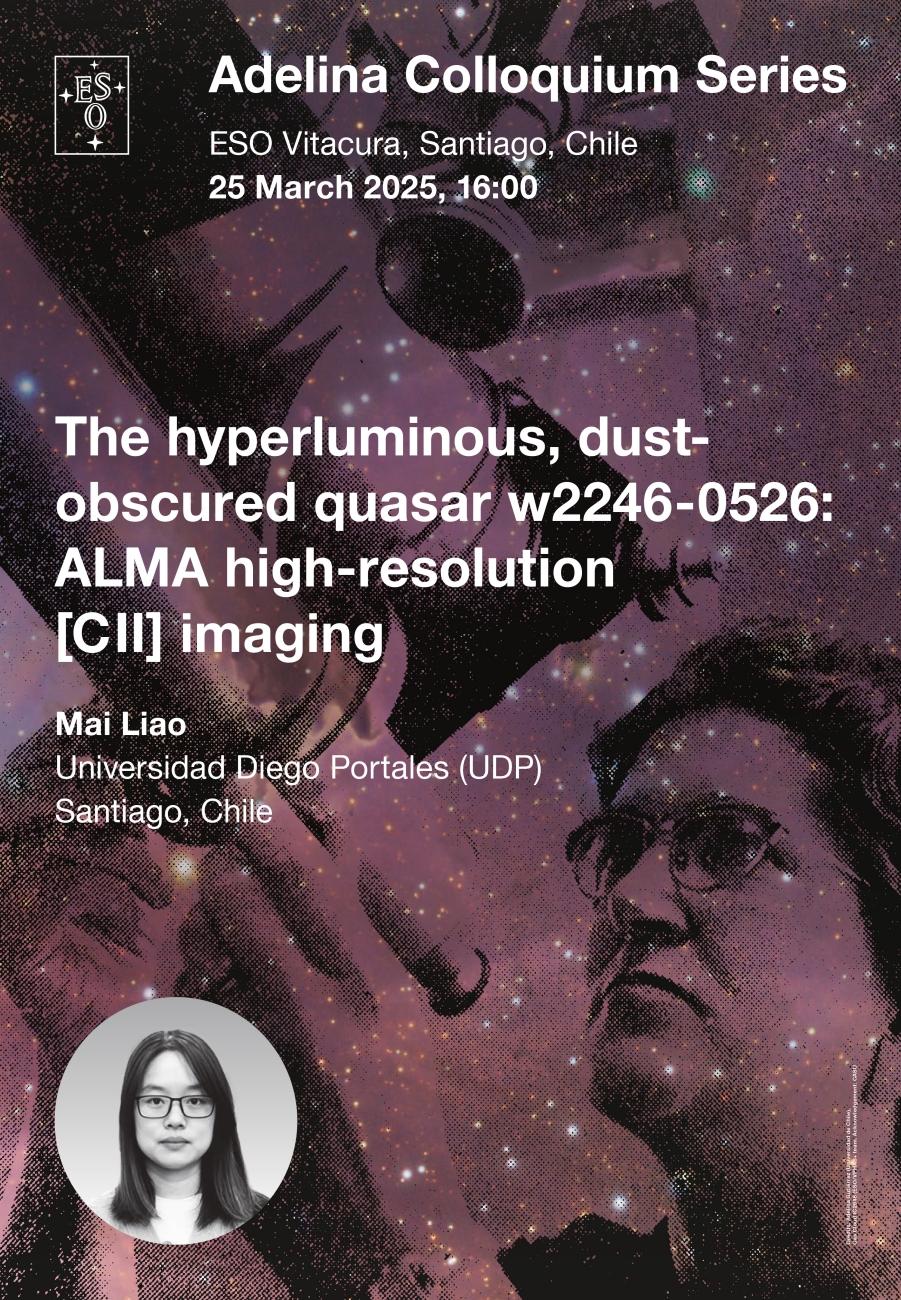The Hyperluminous, Dust-obscured Quasar W2246-0526: ALMA High-Resolution [CII] Imaging
Hot dust-obscured galaxies (Hot DOGs) are a rare class of hyper-luminous, dust-obscured quasars with accretion rates approaching or exceeding the Eddington limit. They are likely in a critical phase of galaxy evolution, where intense AGN-driven outflows exert feedback effects on their host galaxies and subsequently suppress star formation. W2246-0526 at z = 4.6, the brightest known Hot DOG and one of the most luminous objects known in the Universe, serves as an ideal laboratory to study AGN feedback. Previous observations with ALMA have revealed a wealth of interesting properties of this unique target, including that it is in the process of accreting three of its neighboring galaxies and it has a highly turbulent ISM. In this seminar I will be presenting a study based on high spatial resolution observations (~500pc) of the [CII] emission line. The [CII] dynamics is a dispersion dominated system combined with large nuclear outflows. On one hand, by removing the contribution of the outflows, we show that the nuclear velocity dispersion implies the presence of an SMBH with a mass of log (Mbh/M⊙) = 9.80±0.01, and we find that the size of black hole sphere of influence is as large as ~ 2.3 kpc. This constitutes the first time a dynamic SMBH mass is measured by resolving the SoI at z > 2, and highlights that ALMA high-resolution [CII] observations of obscured luminous quasars hold great promise to increase the number of dynamical SMBH mass measurements in very distant galaxies. This is critical for testing indirect single-epoch broad-line mass estimators that underpin AGN-galaxy co-evolution models. On the other hand, our observations reveal spatially resolved, asymmetric nuclear outflows in [CII] with relatively low velocities (400 km/s < Vout <800 km/s) suggesting interaction with a very dense ISM. Despite their low velocities, our analysis shows that W2246-0526 has some of the most powerful outflows known to date. Combining our findings with the previous wealth of knowledge on this target, we conclude that the AGN in W2246-0526 is likely injecting large amounts of energy into its host's ISM, heating it up and, powering galaxy-scale turbulence that may ultimately inhibit star-formation.

